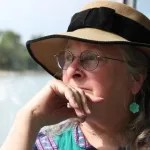
One of the Northside neighborhoods that we have not yet explored is West Colfax. I am going to spend the next few months filling that gap with a few columns on the history of the area.
Colfax Avenue runs east to west from the plains up into the mountains. Designated U.S. 40, it was the main road to the Rockies before Interstate 70 went in. At one point, some people considered it the longest main street in the country. During the gold rush, this route, called The Golden Road, was where prospectors traveled west to look for riches.
Colfax was named for Schyler Colfax, an Indiana journalist, abolitionist, congressman and Ulysses S. Grant’s Vice President. He was also charged but not found liable in a major bribery scandal during Grant’s term. Because he came west and passed through Denver, his name seemed to be a good fit for the long cross-country road.
In West Denver, as you traverse Colfax you find Federal Boulevard on the east then travel to Sheridan on the west. The northern boundary is Sloan’s Lake and the neighborhood runs south to about West 10th Avenue.
From the 1870s, the northern section was part of the town of Highland. To the east was North Denver, and to the south lay the Lakewood Gulch. Along the South Platte two small neighborhoods, Colfax and Brooklyn, developed on the west side of the Platte, between the river and Federal Boulevard and between Sixth Avenue and North Denver. This is now under the Colfax and I-25 viaduct. East of the river was Auraria and what we now call West Denver. A small wooden bridge connected the two sides.
There have been diverse communities there over time. In its earliest days it was camping grounds for nomadic Indigenous people. Much of the area was later reserved for land grants to veterans of nineteenth century American wars. However, because it was so far from where most of these veterans lived, many sold their land to speculators, some of whom actually farmed and developed it. One of those men was Thomas Sloan who moved from Ohio to Colorado in 1859. Sloan’s Lake carries his name. I will cover the lake in a future column.
For many years, the area along the South Platte between Colfax and 13th Avenue was home to Denver’s poorest residents, many of whom were immigrants. Called “The Bottoms,” it was also known as “Jim Town” or “No Man’s Land.” The towns of Colfax and Brooklyn were part of that. In the earliest days the population was a mix of Anglo-Americans, Germans, and other northern European migrants, all down on their luck.
The area held small, wooden houses, small stores and a large number of saloons and other entertainment establishments. Good water and sanitation were mostly non-existent and the air stank of coal smoke, sewage and decay.
Over time, as members of each group gained some wealth, they moved out and another struggling group took their place. To the north, the newer residents were Irish and Italian. From the 1880s Eastern European Jews moved in. And when their time came to move out, the Irish and Italians moved to North Denver and the Jews spread out and built their communities along West Colfax.
By the 1890s, Denver had annexed the whole area. The next chapter of the story came when the City of Denver decided to clear out the riverfront neighborhood while building the Colfax Viaduct and razing the homes and businesses.
They saved a few of the larger structures including the Solf building with its round corner tower and the Brooklyn building, which later became a restaurant called Brooklyn’s. Much later, Mile High Stadium and Meow Wolf filled in more of the area. Most recently large apartment buildings are crowding in as well.
Cities are always changing, but this section of our city has been especially prone to development and redevelopment. I will cover some of this in the coming months. In the meantime, I have a few sources linked to this article online that will tell you more about this month’s tale and give you a head start on what’s to come.
Dr. Rebecca A. Hunt has been a resident of North Denver since 1993. She worked in museums and then taught museum studies and Colorado, Denver, women’s and immigration history at the University of Colorado Denver until she retired in 2020.
